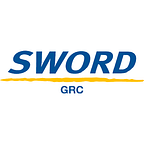The benefits of fully digitalizing an end-to-end risk management process in high risk environments.
Whilst mining, oil and gas represent some of the largest markets across the Latin America, they are amongst the most dangerous and technically challenging in which to work and operate.
Safety incidents can carry dire consequences, often extending far beyond financial penalties and damage to corporate reputations, even political unrest. Increasingly fuelled by ESG (Economic, Social, Governance) principles — a mandate of zero harm and positive impact through responsible business practices — organizations today are more motivated than ever to lead with safety. And in high-risk industries, a safety-first strategy that prioritizes the protection of workers means extending the reach of risk management to all staff and third parties providing the necessary line of sight to management.
According to risk expert, Sebastian Moix — ex Director of Risk at Collahuasi Copper Mine, managing risk at a corporate level is no longer sufficient. The drive for safety must involve a more proactive and preventative approach to risk assessment and operational risk management.
“Within such operational environments, the onus is on employers to ensure that anyone working with hazardous machinery and materials, or under very challenging conditions, is able to undertake their role as safely as possible, with adequate precautions and appropriate controls in place.
“Typically, organizations are fragmented in their approach to managing operational risks, taking a reactive rather than proactive stance. There can be failure to communicate the critical controls that prevent risks from occurring that need to be implemented at operational levels. Worse still, there’s often no verification that these controls are working on a real-time basis before an operator starts working. This leaves workers at the ‘coal face’ exposed and vulnerable to potential injuries.”
The key questions that organizations should be asking are, according to Moix, ‘How do we protect the interests of workers — including the safety and wellbeing of both employees and contractors, equally?’ Moreover, ‘How do we meet our safety objectives whilst also satisfying stakeholders in terms of improved productivity and performance?’
Proactively preventing incidents via a zero-harm approach
In order to attain a vision of ‘zero harm’, attaining safety for people whilst achieving commercial objectives in an ethical and sustainable manner, Moix suggests that organizations need to develop a robust safety culture. An organization’s risk profile should be communicated across and permeate the business, enterprise-wide, at all levels. Employees need to be educated in how they too, as individuals can contribute towards operational risk management, helping to ensure their personal safety as they undertake their duties.
Perhaps greater focus should lie in reduction of exposure to safety hazards at their source, through tighter operational practices and rigorous maintenance of controls?
This objective, he believes, can be achieved through innovative new technologies, designed specifically to reduce risk within safety-critical work environments.
Digitalizing the occupational health and safety risk management process
A world-class example is the newly released Verify mobile app, part of the Active Risk Manager solution set from Riskonnect. Actively involving all employees and contractors it ensures that critical controls are being adhered to and verified on site to help prevent incidents from occurring.
“Crucially, this innovative mobile app provides risk owners with the confidence that controls they have carefully put in place are operating effectively,” explains Moix. “It helps protect workers from harm as they go about their duties, whilst safeguarding organizations from the wider consequences of incidents such as litigation, loss of licence to operate, regulatory pressure, reputational harm and challenges from stakeholders.”
‘Closing the loop’ on risk the management process
By digitalizing the entire risk management process, Verify ‘closes the loop’ — preventing events by ensuring a safe environment for contractors and employees, minimising business disruption, meeting objectives whilst attaining legal or contractual obligations.
Many incidents could be averted if workers are alerted to possible controls and related risks. Using the app, individuals are motivated to be safety conscious when carrying out their day-to-day duties. Active engagement — in real-time and at source — helps prevent accidents, reduces the impact of downtime or disruption caused by incidents and, most importantly, can save lives.
Transparency and traceability
Live data captured by Operators and Supervisors directly from the mobile app enables Control Owners to identify and rectify common aspects of any control that is failing, escalate urgent issues to reduce risk of injury, or gain insight to individuals who may not be following operating procedures correctly and require training.
Replaces onerous paper-based processes
Automation reduces the workload for Control Owners, driving time and cost efficiencies by receiving real-time control evaluations and verifications from numerous sources. Verify digitalizes previous manual and paper-based processes which were difficult to report on efficiently.
“Riskonnect Active Risk’s (previously Sword GRC’s) heritage is built upon enabling world-class organizations in complex, high risk industries to sustain growth and compete in an increasingly globalized world through risk management — balancing threats and opportunities across daily activity at operational, project and asset levels whilst minimizing disruption across the supply chain,” says Charles Longridge, Director — Sales and Global Partnerships at Riskonnect.
“Verify puts a preventative approach to safety risks and their effective management at the very heart of operations in risk-heavy environments — the benefits of which for mining, oil, gas and energy companies should not be under-estimated.”
“Beyond supporting operational performance and business profitability the bottom line is, Active Risk Manager with Verify provides the opportunity to help prevent serious injuries and save lives. And that’s a very powerful message for any organization that takes its ESG and Corporate Governance responsibilities seriously,” Moix concurs.
